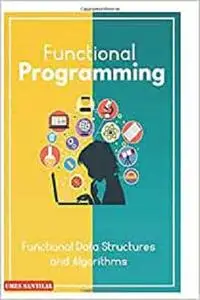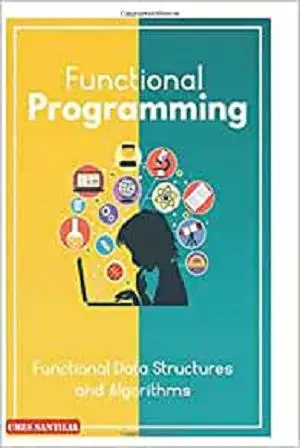Functional Programming: Functional Data Structures and Algorithms by Umes Santilal
English | April 15, 2020 | ISBN: N/A | ASIN: B0875WYDC9 | 301 pages | EPUB | 0.14 Mb
English | April 15, 2020 | ISBN: N/A | ASIN: B0875WYDC9 | 301 pages | EPUB | 0.14 Mb
Functional programming has become a really hot topic in the JavaScript world. Just a few years ago, few JavaScript programmers even knew what functional programming is, but every large application codebase I’ve seen in the past 3 years makes heavy use of functional programming ideas.Functional programming (often abbreviated FP) is the process of building software by composing pure functions, avoiding shared state, mutable data, and side-effects. Functional programming is declarative rather than imperative, and application state flows through pure functions. Contrast with object oriented programming, where application state is usually shared and colocated with methods in objects.Functional programming is a programming paradigm, meaning that it is a way of thinking about software construction based on some fundamental, defining principles (listed above). Other examples of programming paradigms include object oriented programming and procedural programming.Functional code tends to be more concise, more predictable, and easier to test than imperative or object oriented code — but if you’re unfamiliar with it and the common patterns associated with it, functional code can also seem a lot more dense, and the related literature can be impenetrable to newcomers.If you start googling functional programming terms, you’re going to quickly hit a brick wall of academic lingo that can be very intimidating for beginners. To say it has a learning curve is a serious understatement. But if you’ve been programming in JavaScript for a while, chances are good that you’ve used a lot of functional programming concepts & utilities in your real software.The hardest part is wrapping your head around all the unfamiliar vocabulary. There are a lot of ideas in the innocent looking definition above which all need to be understood before you can begin to grasp the meaning of functional programming: Pure functions Function composition Avoid shared state Avoid mutating state Avoid side effectsIn other words, if you want to know what functional programming means in practice, you have to start with an understanding of those core concepts.A pure function is a function which: Given the same inputs, always returns the same output, and Has no side-effectsPure functions have lots of properties that are important in functional programming, including referential transparency (you can replace a function call with its resulting value without changing the meaning of the program). Read “What is a Pure Function?” for more details.Function composition is the process of combining two or more functions in order to produce a new function or perform some computation. For example, the composition f . g (the dot means “composed with”) is equivalent to f(g(x)) in JavaScript. Understanding function composition is an important step towards understanding how software is constructed using the functional programming. Read “What is Function Composition?” for more.Shared StateShared state is any variable, object, or memory space that exists in a shared scope, or as the property of an object being passed between scopes. A shared scope can include global scope or closure scopes. Often, in object oriented programming, objects are shared between scopes by adding properties to other objects.For example, a computer game might have a master game object, with characters and game items stored as properties owned by that object. Functional programming avoids shared state — instead relying on immutable data structures and pure calculations to derive new data from existing data. For more details on how functional software might handle application state, see “10 Tips for Better Redux Architecture”.The problem with shared state is that in order to understand the effects of a function, you have to know the entire history of every shared variable that the function uses or affects.
Feel Free to contact me for book requests, informations or feedbacks.
Without You And Your Support We Can’t Continue
Thanks For Buying Premium From My Links For Support
Without You And Your Support We Can’t Continue
Thanks For Buying Premium From My Links For Support



